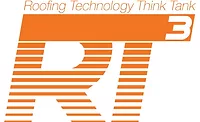Talking Technology with RT3


Jeremy Dickmann
CEO, Apollo Primm Commercial Roofing, Forest Park, Ga.

Wendy Marvin
Founder and CEO, Matrix Roofing & Home Solutions, Vancouver, Wash.
Last month, RC spoke with national technology company leaders serving the roof contracting space. Now it’s time to hear from roofing contractors about the innovation and systems currently in the marketplace and how they’re helping companies stay on mission.
Wendy Marvin and Jeremy Dickmann are leaders of their respective roofing companies in disparate parts of the United States. As board members of the Roofing Technology Think Tank, or RT3, they’re also leaders committed to improving the industry today to help ensure a strong future.
Here’s what each had to say about the state of technology available to roofing contractors, what’s trending for the future, and how to stay engaged.
RC Please describe the current state of the roofing industry and how tech is helping it.
WM: Our industry is booming right now. Tech is giving early adopters an edge over traditional roofers allowing them to do more with less. Examples include using satellite imagery to find hail strikes on roofs versus climbing on to inspect and scheduling with a virtual assistant who works 24/7 versus a traditional in-house person.
RC How does your company fit into that discussion?
WM: [Matrix Roofing & Home Solutions] has always been an early adopter and thus is outperforming some of our competition. We've spent time identifying pain points and then searched out tech to help us. Tech can also reduce redundancy and errors when scheduling or inputting data.
RC With so many technology choices in the marketplace, how do roofers best assess their return on investment?
JD: It depends on tech usage and issue. Typically, we only use tech to do something faster or to help enforce a workflow. If it does something faster, we can calculate the time savings and easily guesstimate an ROI. If it enforces a process, usually it saves training time and increases efficiency to a degree. It saves time on training and onboarding at the very least.
“Typically, we only use tech to do something faster or to help enforce a workflow. If it does something faster, we can calculate the time savings and easily guesstimate an ROI. If it enforces a process, usually it saves training time and increases efficiency to a degree. It saves time on training and onboarding, at the very least.”
— Jeremy Dickmann
RC What areas of tech are growing within the roofing industry?
WM: Companies are offering early solutions to our massive labor shortage. Tear off and installation robots are on the rise as are manufacturing robots who assist in moving materials.
JD: Most of what I see is focused on sales or marketing and scaling prospecting. Recruiting seems to be gaining steam. More and more people are building their own tech solutions.
RC Where should the focus be and where can technology make the most impact in roofing?
JD: I think there are too many "app" solutions that do one thing really well, but they may not make the overall process, or product, "better." The less sexy managing process to improve quality seems to really lag the proliferation of tech, and the flexibility is low. Most of the technology I have [demonstrated] and experienced also lacks good and flexible analytics to create dashboards, KPIs etc., to help focus the business and drive behavior.
WM: Tech companies would do well to get easy-to-use tools into the hands of our slow-to-adopt companies. They could also look at the end-using consumer to push company adoption. Again, labor force support is BIG for us. Our company has enough work, just not enough installers.
RC Roofers will regret not doing _____________ right now regarding technology?
WM: Looking up from their daily business to see what could make life easier. We get so busy "doing" that we often don't look at efficiencies or improvements possible.
“Tech companies would do well to get easy-to-use tools into the hands of our slow-to-adopt companies. They could also look at the end-using consumer to push company adoption. Again labor force support is BIG for us. Our company has enough work, just not enough installers.”
— Wendy Marvin
RC What has you optimistic about the use and adoption of technology in roofing?
WM: Watching new companies open and succeed that are embracing technology. Also, seeing our industry gain attention from the tech sector.
JD: For those capturing data, there is a huge opportunity to use AI to analyze the data. I think imagery analysis is also in the near future. This could help owners and roofers better communicate on optimized solutions.
RC What does the roofing tech landscape look like in five to 10 years? Will we recognize the industry?
JD: Buildings are largely financial instruments, like a stock or bond, and I think there is a huge opportunity to tie many of the inputs together to achieve the best ROI for an owner. Energy savings versus energy creation, ROI, and tenant cost sharing … Inspections with robotics and analysis of imagery for detection of issues before they become problems … I think contracting will still be contracting for those who choose to avoid the tech, but true transparency is possible.
Looking for a reprint of this article?
From high-res PDFs to custom plaques, order your copy today!









